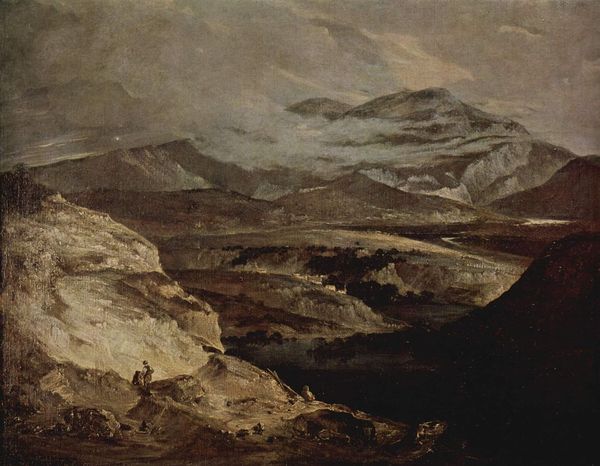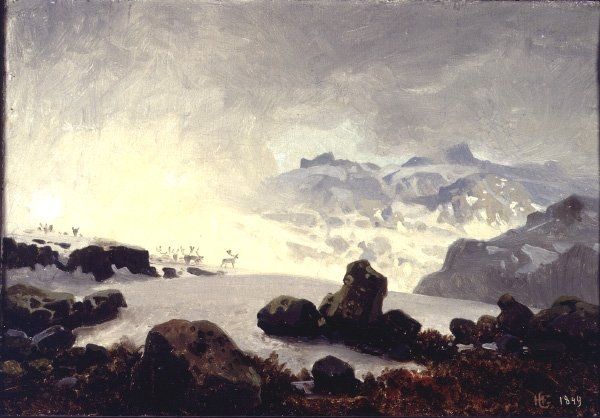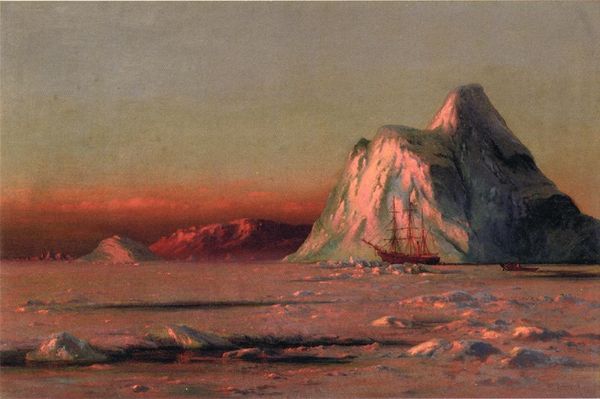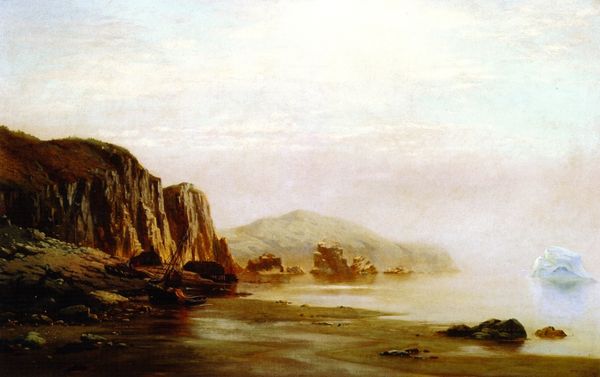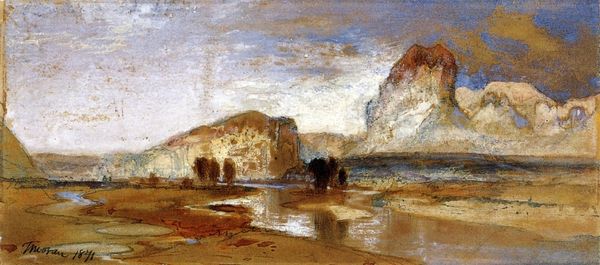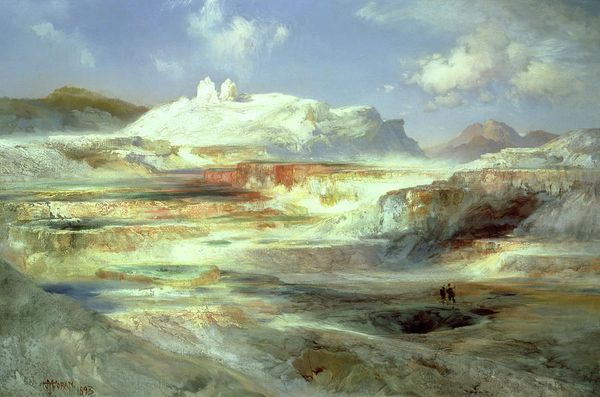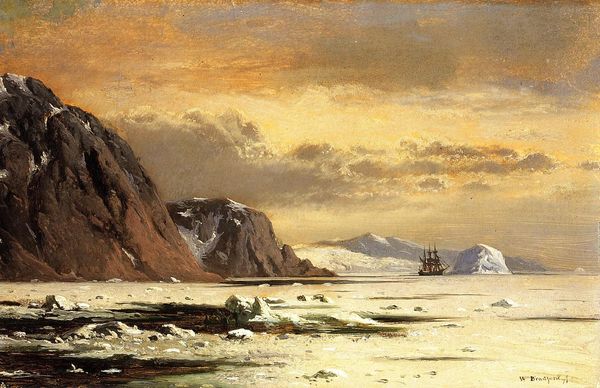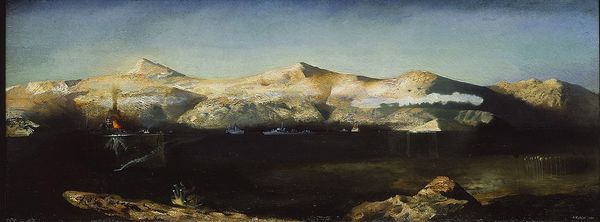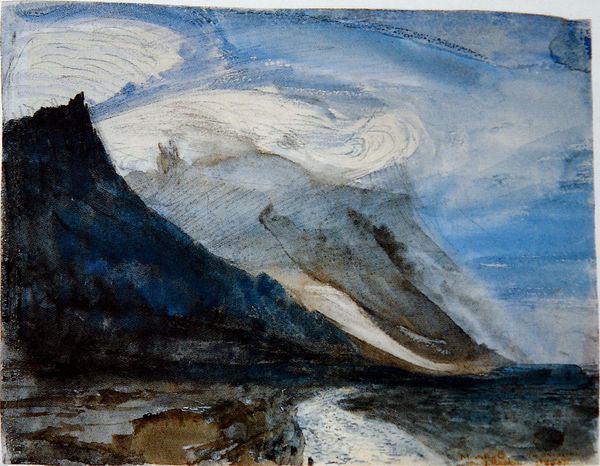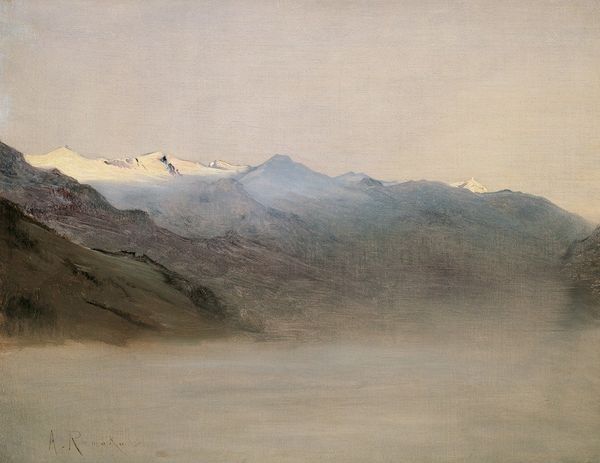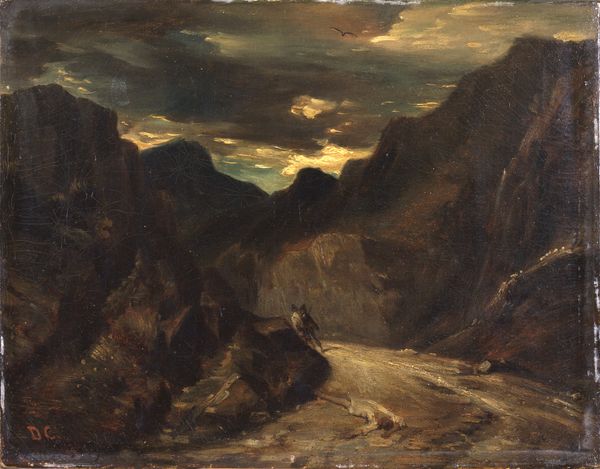
#
abstract expressionism
#
sky
#
abstract painting
#
landscape
#
impressionist landscape
#
possibly oil pastel
#
oil painting
#
rock
#
fluid art
#
acrylic on canvas
#
underpainting
#
cloud
#
natural-landscape
#
painting painterly
#
nature
#
watercolor
Copyright: Public domain
William Bradford’s painting "The Ice Gate of Cape St. Michael" offers a window into the 19th-century fascination with the Arctic, and the romantic, yet colonial gaze which shaped its representation. Bradford, like many artists of his time, ventured into the Arctic motivated by a blend of scientific curiosity and the pursuit of the sublime. But it's impossible to ignore the cultural context of these expeditions. Often, they were intertwined with the expansion of trade routes and colonial ambitions into Indigenous territories. The presence of local Inuit communities, their boats pulled up on the shore, subtly speaks to the dynamic between exploration and inhabitation, as they are dwarfed by the landscape. What does it mean to depict this landscape as both majestic and ripe for exploration? It evokes themes of adventure and discovery, but also touches on complex issues of cultural contact, resource extraction, and the imposition of Western perspectives on lands already rich with history and meaning. Bradford's paintings serve as a reminder of the intertwined narratives of exploration, identity, and the changing face of the Arctic.
Comments
No comments
Be the first to comment and join the conversation on the ultimate creative platform.

